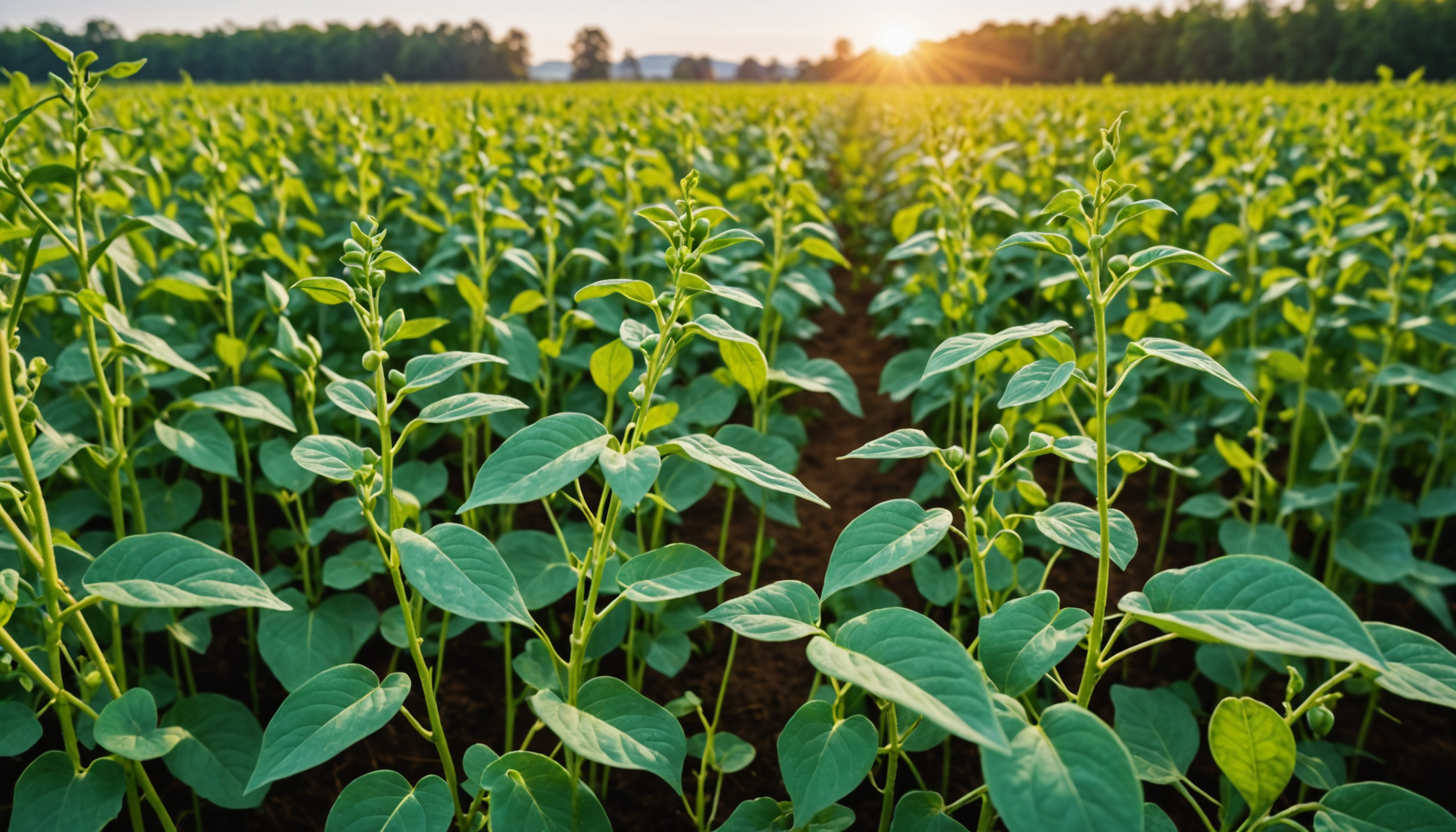
Report on Cowpea Breeding and Its Role in Sustainable Development Goals (SDGs)
Introduction
Cowpea is a vital staple crop contributing significantly to food security and agricultural sustainability worldwide. It serves multiple purposes including food, animal feed, and soil fertility management. Predominantly cultivated in Africa, parts of Asia, and the Americas, cowpea is valued for its rich nutritional content and climate resilience. This report emphasizes the importance of cowpea breeding in alignment with the Sustainable Development Goals (SDGs), particularly those targeting zero hunger, climate action, and sustainable agriculture.
Global Production and Regional Adaptability
The environmental adaptability and utility of cowpea vary across different production regions due to diverse climates, soil types, and pest pressures. To address these regional challenges effectively, breeding programs focus on developing varieties with diverse plant types, growth habits, and maturity periods. This approach aims to maximize yields, enhance environmental resilience, and meet specific regional needs, thereby supporting SDG 2 (Zero Hunger) and SDG 13 (Climate Action).
Importance of Genetic Diversity in Breeding
- Genetic diversity among cowpea germplasm is crucial for successful breeding programs.
- Strategic breeding enhances crop productivity and market value.
- Improved varieties better satisfy consumer preferences and regional agricultural demands.
These efforts contribute to SDG 2 (Zero Hunger) by improving food availability and SDG 12 (Responsible Consumption and Production) by promoting sustainable agricultural practices.
Breeding Priorities and Research Focus
- Enhancing pest resistance to reduce crop losses and minimize pesticide use, supporting SDG 15 (Life on Land).
- Improving drought tolerance to sustain productivity under climate variability, aligning with SDG 13 (Climate Action).
- Increasing nutritional quality to combat malnutrition and promote health, contributing to SDG 3 (Good Health and Well-being).
Ongoing research and breeding efforts are essential to address these priorities and ensure cowpea’s continued contribution to global food security and sustainable agriculture.
Conclusion
In conclusion, cowpea breeding plays a pivotal role in achieving multiple Sustainable Development Goals by enhancing food security, promoting sustainable agricultural practices, and building resilience against climate change. Continued investment in genetic resource conservation and targeted breeding strategies is necessary to overcome regional challenges and maximize the crop’s potential benefits worldwide.
Keywords
- Cowpea
- Breeding
- Food Security
- Resilience
- Varieties
1. Sustainable Development Goals (SDGs) Addressed or Connected
- SDG 2: Zero Hunger
- The article emphasizes cowpea as a staple crop promoting food security, especially in Africa, Asia, and the Americas.
- Focus on enhancing yield productivity and nutritional quality aligns with ending hunger and improving nutrition.
- SDG 12: Responsible Consumption and Production
- The use of cowpea for soil fertility management supports sustainable agricultural practices.
- Breeding efforts to enhance environmental resilience contribute to sustainable production systems.
- SDG 13: Climate Action
- Cowpea is described as a climate-resilient legume, and breeding for drought tolerance addresses climate adaptation.
- SDG 15: Life on Land
- Conservation of germplasm resources and genetic diversity supports sustainable use of terrestrial ecosystems.
2. Specific Targets Under Those SDGs Identified
- SDG 2: Zero Hunger
- Target 2.3: By 2030, double the agricultural productivity and incomes of small-scale food producers through sustainable food production systems.
- Target 2.4: Ensure sustainable food production systems and implement resilient agricultural practices.
- SDG 12: Responsible Consumption and Production
- Target 12.2: Achieve the sustainable management and efficient use of natural resources.
- SDG 13: Climate Action
- Target 13.1: Strengthen resilience and adaptive capacity to climate-related hazards and natural disasters.
- SDG 15: Life on Land
- Target 15.1: Ensure the conservation, restoration, and sustainable use of terrestrial and inland freshwater ecosystems.
- Target 15.5: Take urgent action to reduce the degradation of natural habitats and halt biodiversity loss.
3. Indicators Mentioned or Implied to Measure Progress
- Indicator for SDG 2 Targets
- Crop yield per hectare (e.g., cowpea yield productivity) to measure improvements in agricultural productivity.
- Prevalence of undernourishment or nutritional quality improvements linked to cowpea consumption.
- Indicator for SDG 12 Target
- Extent of sustainable agricultural practices adoption, such as use of cowpea for soil fertility management.
- Indicator for SDG 13 Target
- Number of crop varieties developed with enhanced drought tolerance and pest resistance as a measure of climate resilience.
- Indicator for SDG 15 Targets
- Conservation status and genetic diversity of cowpea germplasm resources.
- Measures of biodiversity in agricultural ecosystems where cowpea is cultivated.
4. Table: SDGs, Targets and Indicators
| SDGs | Targets | Indicators |
|---|---|---|
| SDG 2: Zero Hunger |
|
|
| SDG 12: Responsible Consumption and Production |
|
|
| SDG 13: Climate Action |
|
|
| SDG 15: Life on Land |
|
|
Source: frontiersin.org







